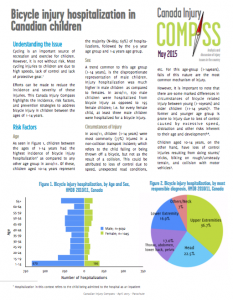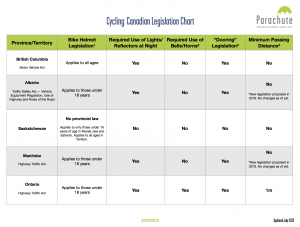Cycling is a healthy and environmentally sustainable way for people to travel that also decreases their risk of multiple chronic illnesses through physical activity. However, people can be injured while cycling and these injuries can be severe or fatal, especially when motor vehicle drivers hit children.
Safe roads
Keeping vulnerable road users safe starts with a safe environment, including:
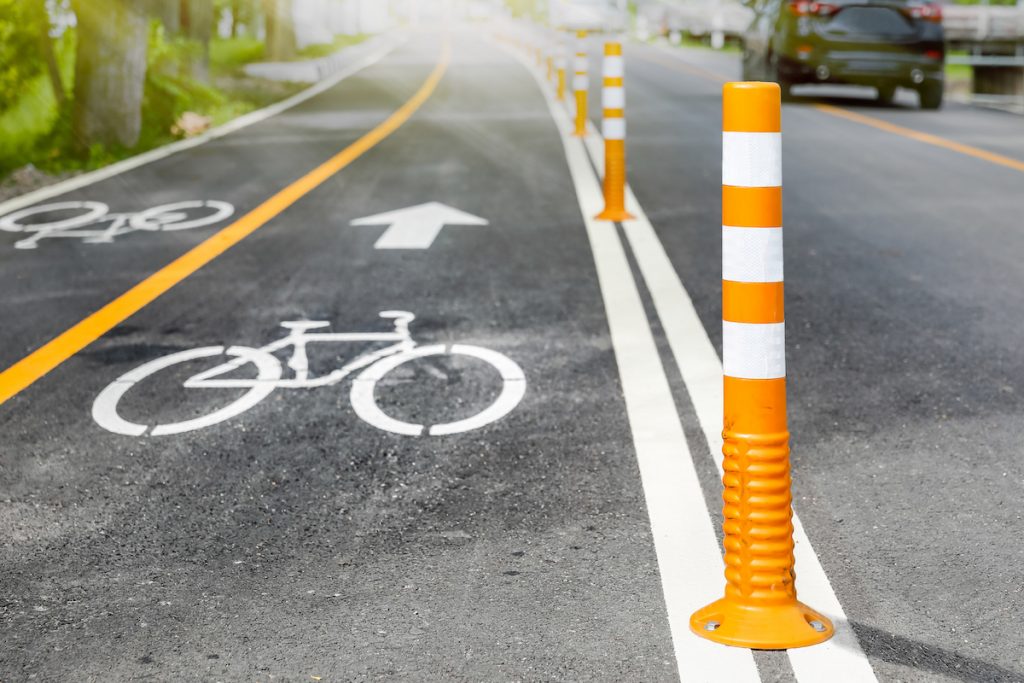
- Reduced speed limits in key areas such as school zones and on residential streets.
- Separated bike lanes and other designated riding areas.
A safer environment increases the likelihood that children, should they be hit by a vehicle driver, will survive.
73 per cent of cycling deaths in Canada involve a collision with a motor vehicle.
What drivers can do
Reduce your speed while driving. In any situation where motor vehicles share the road with vulnerable road users, such as cyclists and pedestrians, drivers should keep their speed to 30 km/h. Drivers must be especially cautious in areas such as school zones, where children may be riding bicycles to or from school.
Ensure you give cyclists space on the road and be aware of the risk of parked cars’ doors opening.
When getting out of your vehicle, check for cyclists before opening the door. Use the Dutch Reach strategy:
- Check your rear- and side-view mirrors
- Grab the door handle with your right hand (hand that’s farthest from the door)
- As you twist, look over your left shoulder for any cyclists approaching
- When the way is clear, open your door slowly
Separated bike lanes
Separated bike lanes are a great way to ensure that riders stay safe near roadways. They physically keep vulnerable riders away from the flow of motor vehicle traffic on busy roads, which can reduce collision risk leading to injury and help prevent riders from being hit when vehicle doors are being opened.
Safety tips
Preplan your route for safety
Designated riding areas are in place for everyone’s safety. Using these routes is a great option for less experienced riders so they can build confidence and skills in a safe environment.
You can find great bicycle-friendly pathways by searching online: our resources section of this page gives you a couple of examples. By pre-planning your ride, you can be sure the route you are choosing is a safe one.
Stay on the right side of the road
- In Canada, always be on the right side of the road going in the same direction as traffic. This makes you more visible to drivers and they are able to see your traffic hand signals.
- When riding with children, have them follow your lead by biking single file and repeating all the hand signals you make.
- As a motorist, ensure you give cyclists space on the road and be aware of the risk with door openings.
Check your ride
Ensure bicycles are adjusted correctly for a person’s height and get in the habit of doing a bike check before getting on, ensuring that the tires are inflated and the brakes are working properly.
Be prepared
- Get trained in bicycle safety and rules of the road.
- Be sure to use appropriate hand signals and obey all traffic signs.
- Parents can ask their children to show the signals for stop, right- and left-hand turns before getting on their bikes. This can be a fun quiz as you are preparing for a family bike ride.
- Adults should remind children to always dismount their bikes when crossing the street.
Protect your head: Wear a helmet
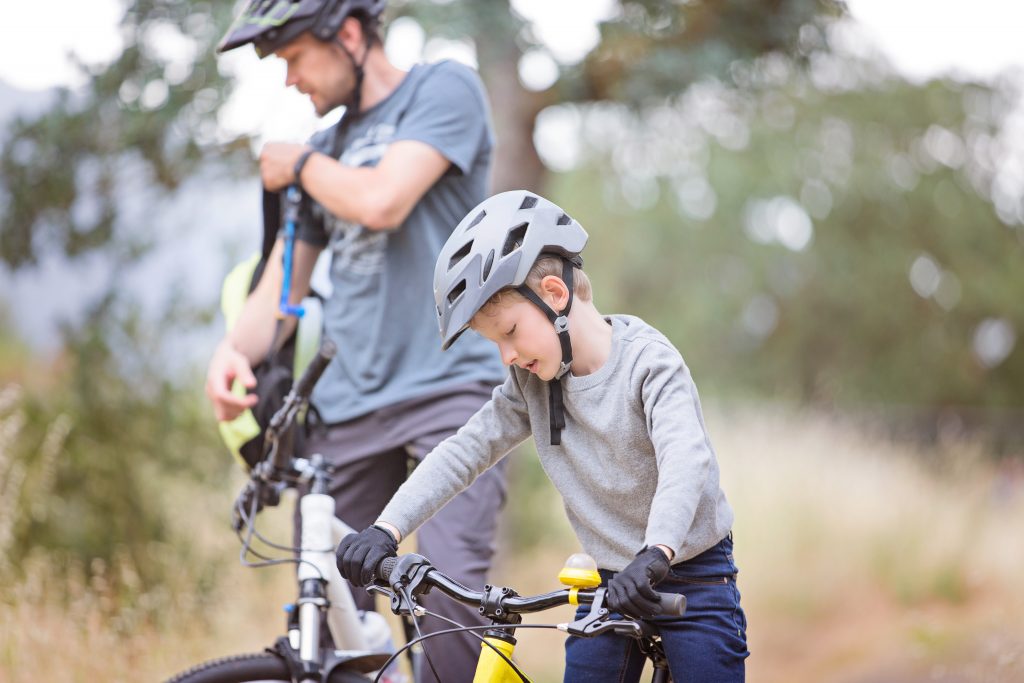
- Head injuries are a leading cause of death to kids on bicycles. A properly fitted and correctly worn bike helmet can make a dramatic difference, cutting the risk of serious head injury by up to 60 per cent.
- Use the 2V1 rule for helmet fitting: the front of the helmet should sit two fingers above your eyebrow, straps form a “V” under your ears, one finger space between strap and chin.
- Read more about bicycle helmets.
Be seen and heard
Make sure drivers can see you when it is dark or when the light is low, such as at dawn and dusk.
- Wear bright clothing. Reflective clothing is effective at night, when it’s picked up by car lights, but less effective at dawn and dusk. Fluorescent-coloured clothing and accessories are more visible in those low-light conditions.
- Equip your bike with flashing lights and reflectors to help increase visibility.
Have a working bell on your bike. It allows you to gain the attention of other riders and pedestrians, letting them know you are close by or passing them. Using your voice works well, too!
Children on bicycles
Safe age for children to ride their bicycles on the road
- Around age 10, children develop the physical and thinking skills that are important for cycling on the road: for example, navigating traffic and processing multiple pieces of information in situations that need quick reaction. Their ability to ride on the road also depends on their experience and the environment they are riding in, e.g. high-traffic areas.
- Younger children should be accompanied by adults or older children whenever they ride their bikes, especially in traffic.
It’s a good idea to build skills gradually with your child. To help decide if your child is ready to ride on the road, go out with them so you know how they react to traffic and think about:
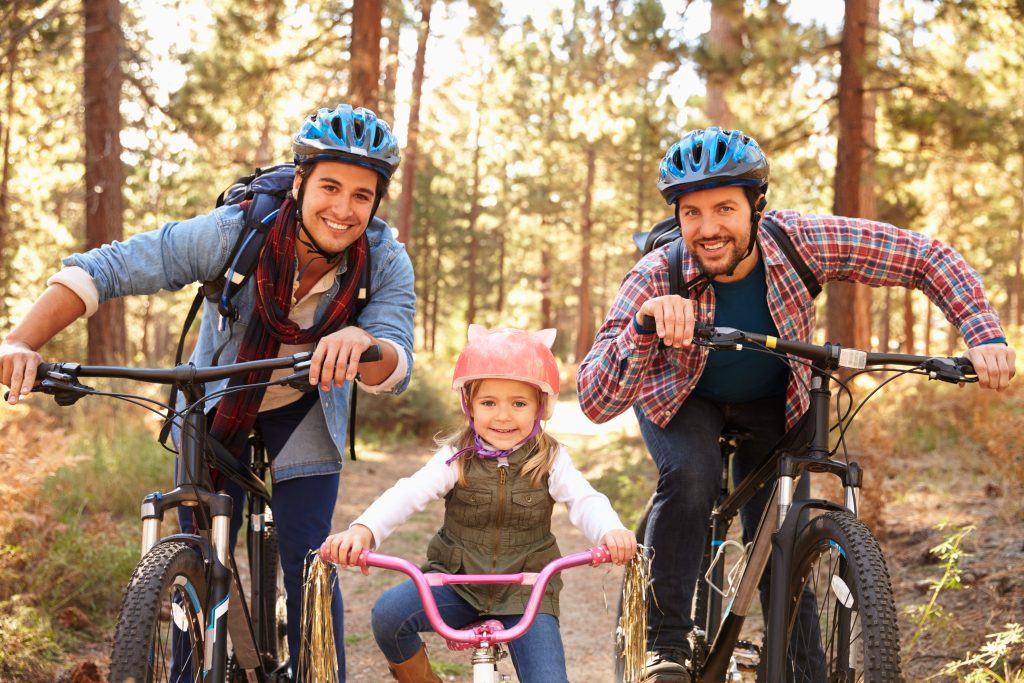
- The roads around them (e.g. do streets have a lot of traffic or many intersections to cross).
- The amount of practice your child has riding on streets.
- Your child’s knowledge of the rules of the road.
Social factors that affect cycling safety
Parachute recognizes that people who live in low-income neighbourhoods are more likely to be injured because of factors such as unsafe built environments. As well, if we improve people’s access to health services, education, employment income, quality housing and improved social environments, we decrease rates of injury. Our suggestions for preventing cycling injuries should be coupled with changes to the built environment such as separated bike lanes throughout our communities and enforcement of by-laws to reduce speeding. These have been proven to decrease rates of injury wherever implemented.

